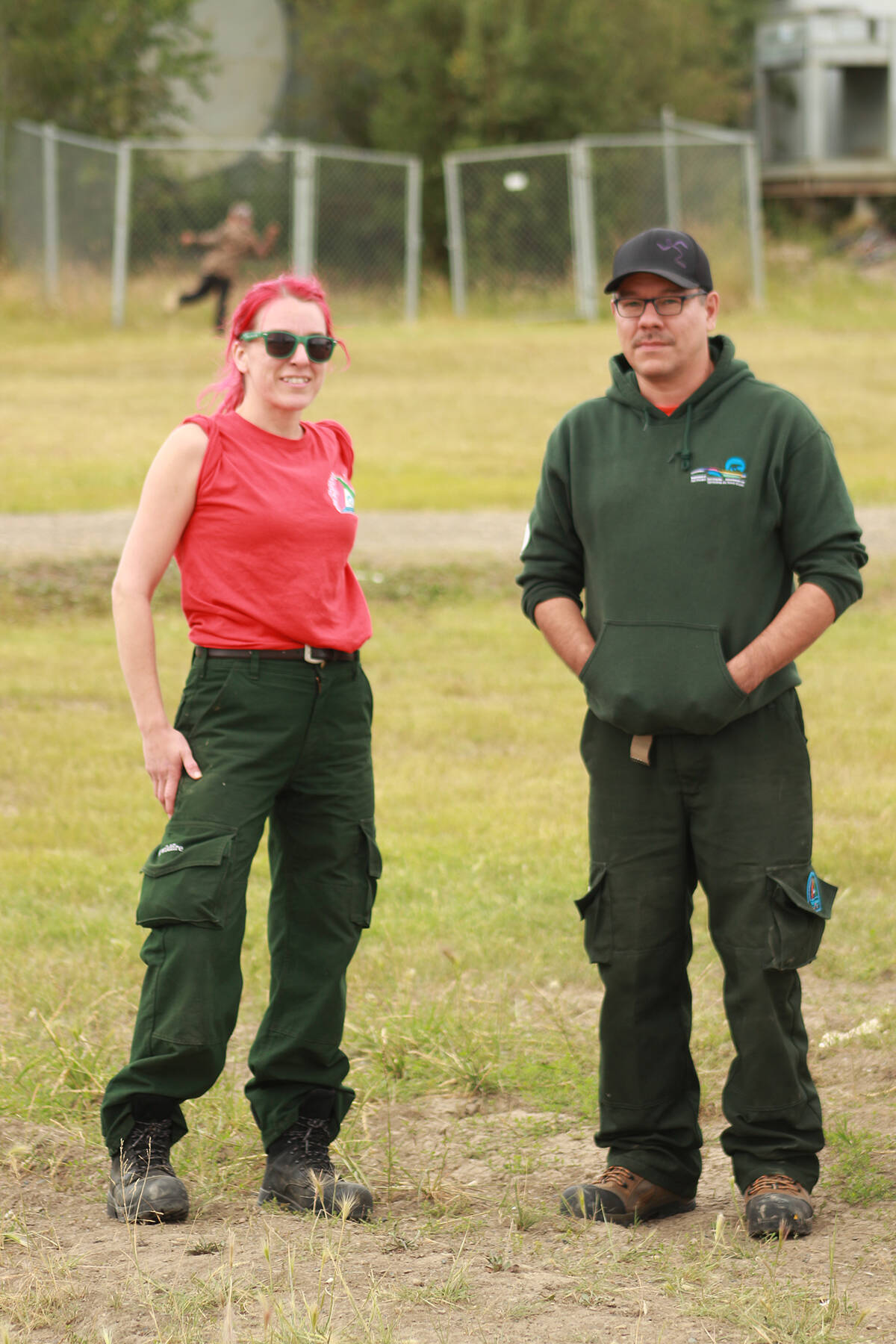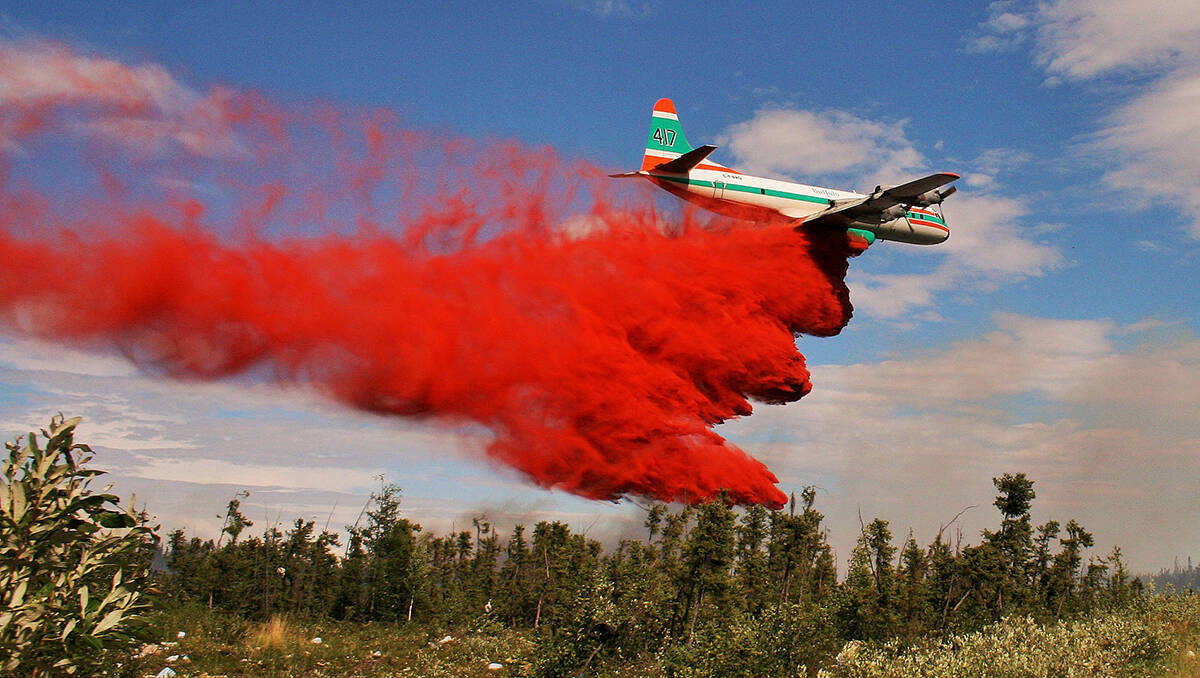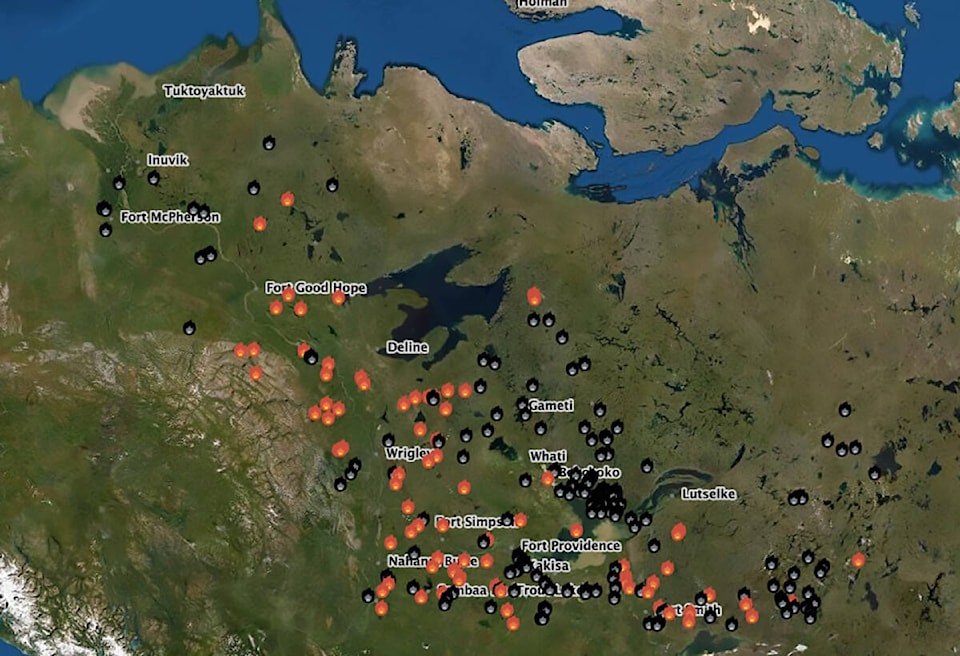Despite soaking conditions in the Beaufort Delta, the Northwest Territories is recording one of the worst wildfire seasons in recent memory.
As of Oct. 6, Environment and Natural Resources reported 82 active fires in the territory. A total of 536,556 hectares have been affected by burns this year. A smoke advisory was issued for the community of Thebacha on Oct. 4 as blazes persist into late fall. Over 4,300 square kilometres of land have been scorched this year and a total of 253 wildfires have burned across the territory.
“Exposure to smoke is highest in people who are physically active outdoors - including outdoor workers,” said Health and Social Services Communications Manager Jeremy Bird. “Exposure can quickly result in sore eyes, tears, cough and runny nose. People at risk of more severe health impacts include young children, the elderly, people with diabetes, lung or heart conditions, and potentially pregnant women.
“You can reduce your exposure to smoke by avoiding strenuous outdoor activities and staying indoors with windows and doors closed.
“Anyone experiencing serious symptoms such as wheezing, chest discomfort, or shortness of breath should go to their local health centre.”
Wildfires also destroyed a cabin near Fort Smith, where the fire danger forecast is officially still high. Fire danger ranges from extreme to medium the further south one goes. Conditions in Fort Liard, Fort Resolution, Enterprise and Łutsël Kʼé all still register as extreme. Things are just slightly better in nearby Fort Simpson, Nahanni Butte, Fort Providence, Fort Smith, Hay River, Kakisa, Yellowknife and Behchokǫ̀ where the fire danger rating is listed as high. Wildfire season officially “ended” Sept. 30, but this year had already stood out as a bad one by July 11, when NWT Fire announced more area had been burned in the 2022 fire season, than during all of 2021 combined.
Wildfires have sparked other infrastructure problems too. A widespread power outage in the South Slave on Sept. 15 was caused when fires interfered with transmission lines. This led to outages in Yellowknife, Hay River, Fort Resolution, Enterprise and the KFN. At least three cabins have been lost in the blazes — two near Wrigley in July and a third near Fort Smith in October. The Dehcho’s Scotty Creek Research station was also threatened by wildfire.
In response to projected increases in wildfire activity due to climate change, the federal government announced Sept. 17 that it is contributing $19,985,264 to the NWT Wildfire Protection Project, through the Disaster Mitigation Fund. The funds will go to creating “fire breaks” and to reducing fuel sources in over 1,200 hectares of trouble spots to minimize the chance of wildfires near communities.
“This announcement is such great news for NWT communities. It is such an important demonstration of how by working together we can achieve so much more,” said Yellowknife Mayor Rebecca Alty. “The development work done by the Forestry Division of the GNWT with community governments to produce Community Wildfire Protection Plans was the needed background work to leave us ready to complete the application and now we all move forward in partnership to see all needed wildfire breaks constructed and the residents and assets of the NWT protected.”
To report a wildfire, call 1-877-698-3473.


